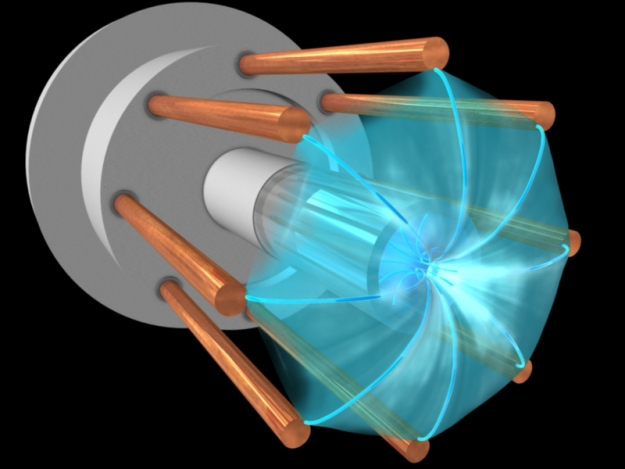At Indiegogo raise money for a prototype of an inexpensive fusion reactor

An interesting trend has been observed on international crowdfunding platforms for quite some time: raising money for various kinds of popular science and research projects. Of course, it is difficult for an average person to determine how real this or that scientific project is, what fraudsters use, but there are also quite respectable “white” projects.
The other day it was announced the beginning of the collection of funds for an inexpensive thermonuclear reactor, the cost of which, according to the developers, can reach not hundreds of millions and billions of dollars, but only 300 thousand. And the reaction, again, according to the developers, will be controlled. As far as possible - I propose to discuss in the comments to this material.
')
The project itself was named Focus Fusion. Its capabilities are based on what is considered a disadvantage of modern thermonuclear reactors — plasma instability, the inability to keep an extremely hot plasma for any length of time to conduct a controlled thermonuclear reaction and receive energy.
For reference : One of the authors of the project, the team leader - Eric Lerner , a physicist, a writer - a popularizer of science. In 1984, he began to study the plasma, and received grants for his research, in particular, from NASA ( Jet Propulsion Laboratory ).
The Focus Fusion project has been around for a long time, in particular, Lerner talked about it in 2007 on Google Tech Talk.
Among other things, Eric Lerner is the author of about 600 popular science articles, as well as the owner of several awards, in particular, from the Aviation Space Writers Association. He is also the author of the book “There was no Big Bang” (this is not a godly book, so to speak, but a scientific work on the theme of the evolution of the Universe). Of course, the idea of the book is different from the generally accepted theory, but it cannot be called unscientific.
The authors of the project use the pinch effect, which they are actively fighting in government programs for thermonuclear fusion, for energy. A bit below is a video explanation of this process.

The project team cites its work, published in 2012 in the Physics of Plasmas jungle, as evidence that the work on the project began long before fundraising began.

The paper describes the successful conduct of the experiment with plasma heating to 1.8 billion degrees Celsius (the first goal of the team) and the creation of a tiny plasmoid that existed 10 billionth of a second (second goal). The third goal is the prolongation of the plasmoid lifetime in order to “ignite” the thermonuclear reaction. By the way, there is a scientific review about this project.
As part of the project, his team created a small device, where the main role is played by cylindrical electrodes. Through them, a current of millions of amperes is passed through, and as a result a "dense plasma" is created. Here is a video showing how this all works:
The team needs money for acquiring a set of electrodes, which cost 200 thousand US dollars. Tungsten electrodes, in the case of funding the project, will be installed in July. In addition, the team also needs beryllium electrodes, since tungsten will crack due to intense x-rays at the reaction site.
This acquisition will help extend the life of a dense and very hot plasmoid, to conduct a more or less prolonged thermonuclear reaction. Actually, the project team does not claim that they expect 100% success, but the probability of a positive result is very high.
In general, everything sounds quite interesting, but, of course, we are waiting for comments from people versed in physics well enough to express their authoritative opinion about the reality of such a project.
Via indiegogo
Source: https://habr.com/ru/post/223509/
All Articles